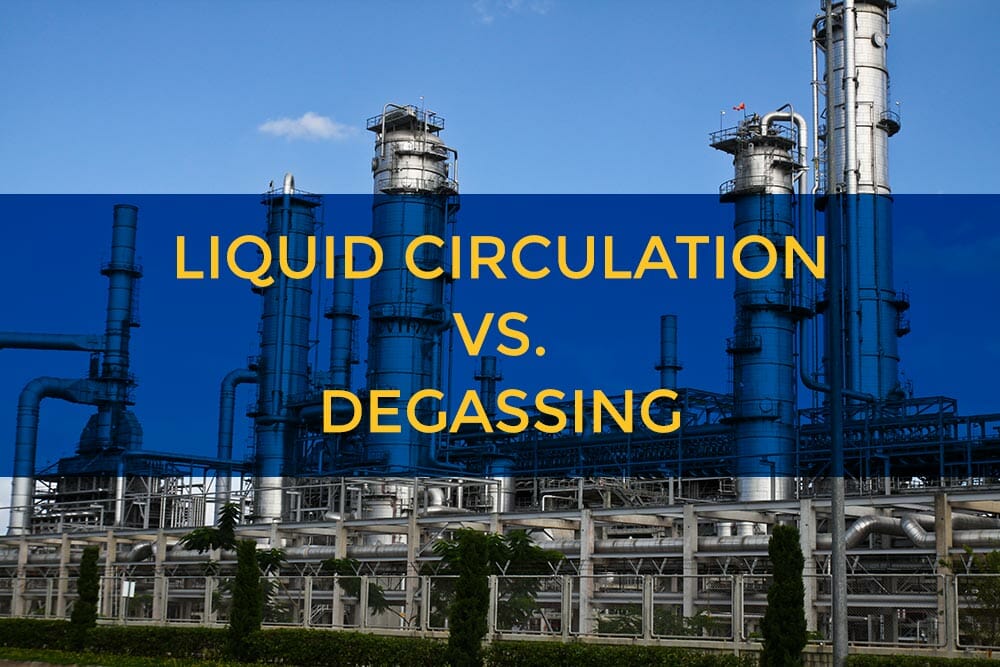Any scheduled maintenance and inspection performed in the oil and gas industry first requires the reduction and removal of potential hazards from the systems being maintained.
These hazards can include hydrocarbons/ LEL’s, benzene, H2S, iron sulphide (pyrophoric iron), ammonia, and mercaptans. The two most common methods used to remove these contaminants from process systems (towers, separators, heat exchanges, piping, etc.) are degassing (vapour phase) and liquid circulation (decontamination).
Liquid circulation may include either a hydrocarbon based or water based circulation fluid. Typically, a hydrocarbon based fluid is preferred as a first step and is applied to the lower part of the vessel only to address the sludge or heavy deposit removal. The second step, in this case, would be either water based circulation with premixed chemicals, or degassing to remove light contaminants (LEL’s, benzene, H2S, FeS, etc.).
Liquid Circulation Advantages and Disadvantages
The primary advantage of liquid circulation is the ease of control over the flow rate, temperature, and pressure. This process can also be applicable to any chemicals, ie. low flush point, oxidizers, low decomposition temperature, etc. Moreover, liquid circulation will leave the process system at a lower temperature once completed compared to steam injection.
However, liquid circulation also has significant disadvantages. The biggest disadvantage being limited capacity; meaning a predetermined/premixed portion of circulation fluid and chemical can only remove limited amount of contaminants. To remove any residual contaminants, a new batch of chemicals has to be prepared. This would double the amount of waste, and increase the amount and cost of the chemicals required. Any analytical testing can only be performed once the batch has been removed from the vessel, so if there are additional contaminants remaining, a new batch of chemical is required.
Another disadvantage of liquid circulation is the dependency on tower spray nozzles in large towers. Large towers have too much volume to be fully flooded and circulated; therefore, a cascade option is used to inject and distribute chemicals from the top of the vessel. Since the cleaning is happening before the scheduled maintenance has been completed, there is a significant chance that the tower nozzles may malfunction or be plugged from regular use. The success of liquid circulation depends on the distribution of the chemical throughout the vessel.
Degassing Advantages and Disadvantages
The biggest advantage of degassing is its ability to access all of the surfaces inside of the unit being cleaned. Because the chemical injection rate can be controlled, a minimal amount of chemical can be continually injected until the applied analytical method confirms the removal of contaminants.
The degassing process does however, require two flow steam (steam/chemicals to a flare and condensate drain to a condensate storage); otherwise, will not be successful. Furthermore, steam quality plays significant role to the outcome, saturated low pressure steam is ideal. Superheated steam with reduced amount of condensation can potentially carry a significant amount of chemicals out of the unit being cleaned to flare. This causes extended time and excessive amount of chemicals.
In conclusion, each of these methods has preferential applications where it will prevail over the other due to certain design limitations (eg. No steam available, waste disposal, vessels not connected to flare, etc.). However, in the case where either method can be applied, based on our experience, our recommendation would typically be to use the degassing method
